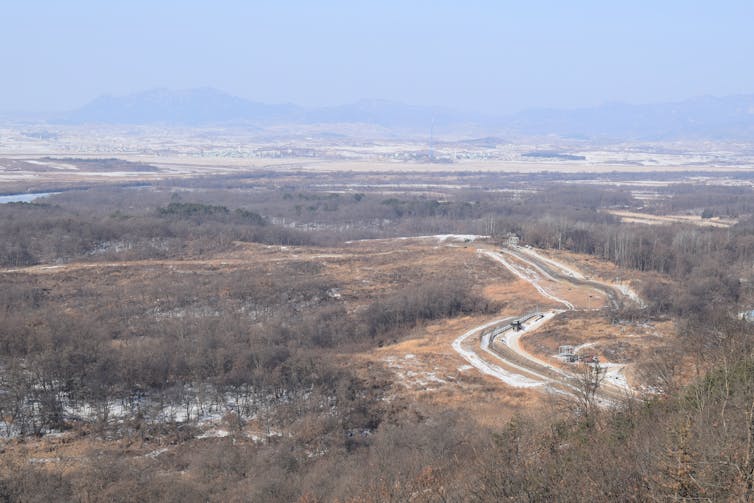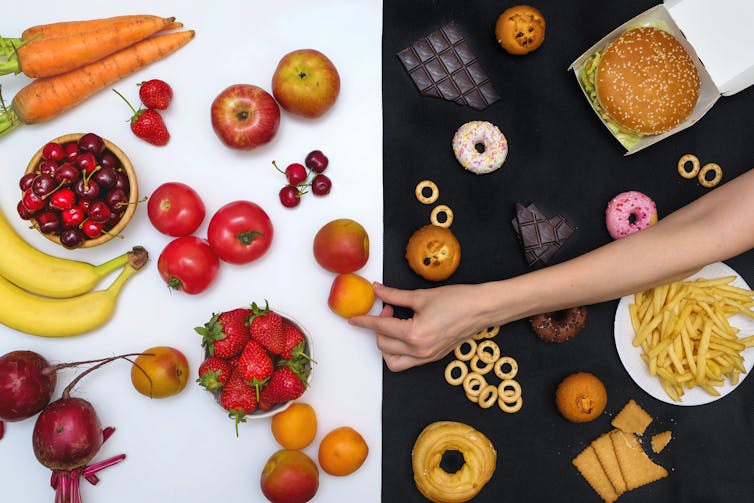Source: The Conversation – UK – By Andrew Dix, Senior Lecturer in American Literature and Film, Loughborough University
In his essay Decline of the English Murder, the writer George Orwell evokes the pleasure to be had in reading about killing. After a good meal (including pudding), you are in the mood to read: “the sofa cushions are soft underneath you, the fire is well alight, the air is warm.” And what is it, in “these blissful circumstances”, that you want to read about? “Naturally,” says Orwell, “a murder”.
Substitute Orwell’s fires for contemporary radiators, and he might be describing the millions of readers in our own moment who have turned contentedly to stories of killing in the Thursday Murder Club books by Richard Osman. Comprising 2020’s title novel and three follow-ups (a fourth, The Impossible Fortune, is due in late September), these murder mysteries set in an idyllic retirement village in Kent have proved phenomenally successful.
Why have so many people, including some not previously invested in crime fiction, been drawn to these novels? It is not as if the series has been scrubbed free of potentially off-putting material. The Thursday Murder Club itself, for example, features not only two new killings for the quartet of older investigators to unravel, but memories of brutal gangland executions and a tragic suicide.
Such content, however, rarely ruffles The Thursday Murder Club’s smooth storytelling. The relaxed narrative voice, replicating Osman’s register as a genial quiz show host on TV, makes difficult things manageable. So, too, do the novel’s copious references to cakes: whenever a murder threatens to become too much, there is always a lemon drizzle or Viennese whirl to soothe.
Now The Thursday Murder Club has been adapted for the screen, enjoying a short cinema release before its streaming on Netflix. This adaptation has Hollywood heft behind it: produced by Amblin Entertainment (Steven Spielberg’s company), directed by Chris Columbus (veteran of Home Alone, Mrs Doubtfire and two instalments of the Harry Potter franchise), and with music by Thomas Newman (whose other composing credits include the Bond films Skyfall and Spectre).
If anything, Osman’s already sugared original has been further sweetened in its transit to the screen. The novel’s gangland subplot, for example, is shaved down to a few hints; and a doomed love affair that in the book precipitates suicide has been erased entirely. While some condensing is inevitable in transposing a 400-page novel to a two-hour film, the excisions made by Columbus and the co-screenwriters Katy Brand and Suzanne Heathcote are in the interests not only of economy, but of sanitisation for still further mass-market appeal.
One of the delights offered by Osman’s original is its knowing references to other crime fiction. In a suggestive scene, the investigators talk about their own favourites in the genre. Patricia Highsmith says one; Ian Rankin says another; Mark Billingham says a third. Here they evoke kinds of crime fiction entirely distinct from the novel in which they are situated as characters.
Columbus’s film doesn’t carry across such mischievous allusiveness. Given its medium, however, it can enlist visual pleasures unachievable by the print-bound Osman.
In the 1980s, film theorist Tom Gunning coined the term “cinema of attractions”. This he offered as a way of characterising films that suspend or downplay the storytelling itself and seek instead to engage audiences by other means, such as spectacle that is unusual, beautiful or amusing.
Gunning had especially in mind work produced in cinema’s inaugural decade from 1895 onwards, when a film’s running time was limited, allowing no scope for narrative development. But his idea is fruitful in thinking about filmmaking of later periods, too. If it offers us a framework for considering the Marvel Cinematic Universe – all those standalone CGI effects like the look of the villain Thanos or the rendering of otherworldly environments – it is also apt in reviewing the new Thursday Murder Club.
The film engages in some narrative business, of course, offering a set of murders for investigation and solution. Who killed two of the figures behind upsetting plans to bulldoze the retirement village in favour of an event centre? Whose body is the unexpected extra one found in a tomb in the graveyard adjoining the complex?
Arguably, however, the storytelling here is relatively uninvolving and peripheral to the film’s chief effects. Many viewers are likely to be absorbed instead by the abundant display of British and Irish acting royalty: in particular, Helen Mirren as resourceful former secret agent Elizabeth (“I have a wide portfolio of skills”), Pierce Brosnan as retired union leader Ron who is itching for new campaigns, and Ben Kingsley as suave former psychologist Ibrahim.
And then, as in Osman’s novel, there are the cakes.
Reviewing recipe books, the writer Angela Carter referred to the “awesome voluptuousness” taken on by food whenever it is photographed in that genre. Carter’s description fits perfectly the cakes we see in Columbus’s film. Indeed, the Victoria sponge and the coffee and walnut cake made by the fourth investigator Joyce (Celia Imrie) have a prodigious depth, a lavish creaminess, that threaten to act even these British stars off the screen.
Looking for something good? Cut through the noise with a carefully curated selection of the latest releases, live events and exhibitions, straight to your inbox every fortnight, on Fridays. Sign up here.
![]()
Andrew Dix does not work for, consult, own shares in or receive funding from any company or organisation that would benefit from this article, and has disclosed no relevant affiliations beyond their academic appointment.
– ref. The Thursday Murder Club: everything is eclipsed by the cakes in this sanitised Netflix adaptation – https://theconversation.com/the-thursday-murder-club-everything-is-eclipsed-by-the-cakes-in-this-sanitised-netflix-adaptation-264228












